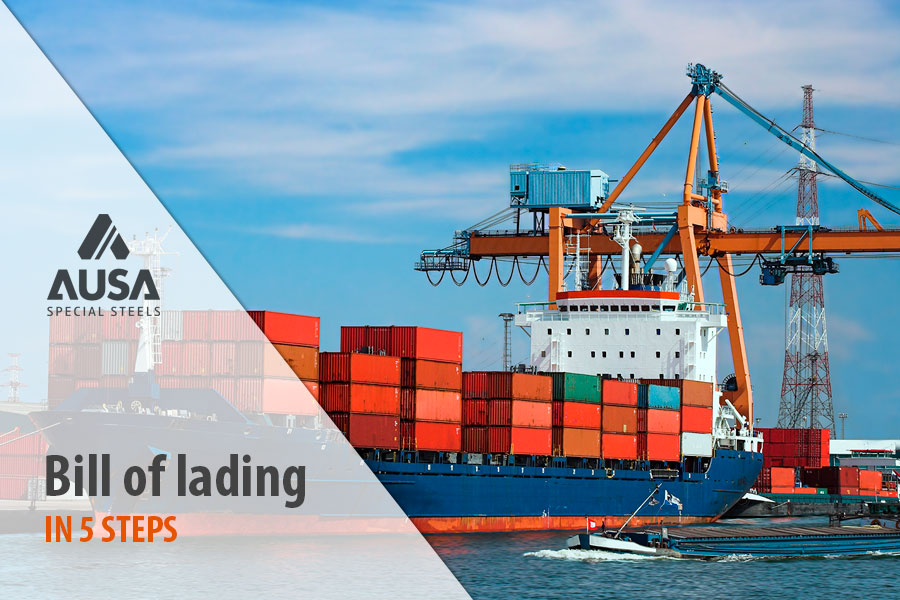
More than 80% of the world international transport of goods, including steel, is carried out by sea*, mainly for economic reasons.
Dry cargo shipping, including steel, is growing faster than world GDP.
The Bill of lading, being B/L its abbreviation, is one of the essential documents used for this means of transport. In these five points.
1.- What is it?
The bill of lading is a standardized document related to maritime transport only.
We can compare it with the CMR used in transport by road.
This document, issued by the carrier, establishes the contractual relationship between the shipper, the consignee and the carrier.
2.- What does it mean?
It is :
- Evidence of the contract of carriage, including the price agreed.
- Document of title of goods on board.
- The confirmation that the goods have been loaded by the carrier for delivery at the destination agreed to the consignee or to whom has endorsed the bill of lading.
- Evidence of the status of goods.
3.- Who are listed?
- The shipper.
- The carrier.
- The exporter.
- The consignee of godos.
- The contact at the destination port.
4.- What information must it contain?
At least, the following data must be included:
- The identity / address / identification of the carrier, shipper and consignee.
- Identification of the vessel.
- Loading and unloading ports.
- The description and number of the goods loaded and their status.
- The freight.
- The number of original Bill of lading documents issued.
- The place, date and signature of the carrier, agent or Captain of the vessel.
5.- What information must it contain?
This document is regulated by the Brussels Convention of 1924, the Visby-Hague rules of 1968 and the Hamburg rules of 1978, mainly.
The different types of bills of lading and their particular specifications as well as their legal implications make it necessary, to deepen this subject, to suggest the following specialized documentation:
In 2017 revolution projects about maritime transpot are being developed which will mean crewless or autonomous ships; the main objectives: the reduction of sea transport incidents due to human errors, of costs and of pollutant emissions.
A disruptive change in a traditional world in which the Bill of Lading maintains its position. From 2015, the bill of lading can be issued electronically; the format on paper will likely disappear over time but the bill of lading will continue to perform its duties in the maritime transport of our shipments of special steels.







